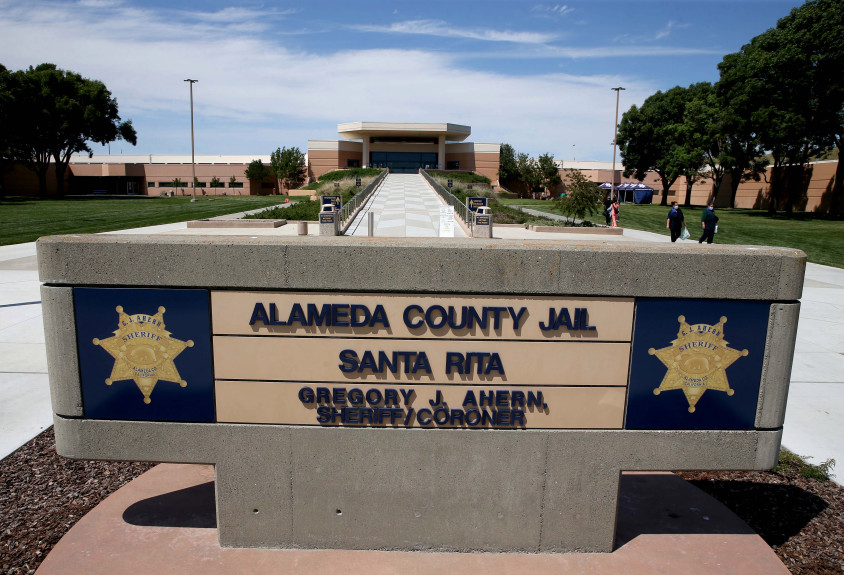
Distressing news from Santa Rita Jail: The Mercury News reports:
At least 40 inmates have tested positive for the coronavirus within nearly a 24-hour period, the jail’s largest outbreak since the pandemic began.
The inmates that tested positive are mostly workers in Santa Rita Jail’s kitchen, or laundry services. When asked if the sheriff’s department was worried the virus could have spread to other parts of the jail through the food, Alameda County Sheriff spokesman Sgt. Ray Kelly said the department is looking into it.
“That definitely would be a concern, wouldn’t it?” Kelly said Thursday.
Kelly said jail officials are conducting “contact tracing” to determine where the exposure could have originated. Evidence so far points to the cluster within the same housing unit, 25, which typically holds minimum-security workers.
Angela Ruggiero, Record number of coronavirus cases reported at Santa Rita Jail, San Jose Mercury News, July 16, 2020
This distressing report is the latest addition to a series of newspaper exposés about outbreaks in other CA county jails. As I explained in previous posts, as well as in our open letter to the Governor, save for a handful of reporting jails, reports about infections in jails have been sporadic, with no guiding hand or uniform style. It is astonishing that we’ve had to wait four months for the BSCC to take action, but it’s gratifying that it is finally stepping up and will begin data collection now. The Sac Bee reports:
California’s jail oversight board on Wednesday said it would collect and publish data about COVID-19 cases in county facilities, a response to months of public criticism and an apparently faltering effort to get similar information from the state’s health department.
Jason Pohl, Five months after outbreak, California to publish COVID-19 data on local jails, Sacramento Bee, July 15, 2020
In her letter to CA sheriffs, Linda Penner, Chair of the BSCC, asked them to collaborate in two ways:
Beginning July 20, 2020, we are urgently requesting that each Sheriff and Chief Probation Officer provide facility-level COVID-19 data directly to the BSCC. The data request will include the number of new positive COVID-19 tests for both residents and staff (reported separately), and deaths at each facility each week. We will also make a one-time request for your facilities’ cumulative COVID-19 case information and deaths to date.
In addition, we are requesting that you ensure that your facility health care providers are immediately reporting detailed case-level COVID-19 data to your county public health agency. (Health & Saf. Code, § 120130 & Cal. Code Regs, tit. 17, § 2500.) Every facility administrator should work with their health care providers to ensure that data are being reported timely and completely to your county public health department. We will begin requesting data from each agency on July 20, 2020, and the target date for launching the BSCC COVID-19 dashboard is July 31, 2020.
BSCC Letter to Sheriffs, July 15, 2020
Note that the instructions to sheriffs only include positive tests and deaths. In order to get a sense of what is being done in counties to curb the virus, we must have additional information about the total number of tests, as well as about the methods of social distancing within the facilities (i.e., use of isolation). It is also essential to know information about hospitalizations vs. in-situ healthcare.
Most importantly, this data is essential because, every day, judges make decisions about pretrial detention. As I explained yesterday on ABC7, the pandemic has raised all sorts of due process questions that require tradeoffs, such as whether, for example, the confrontation clause is better served via in-person masked testimony or via an unmasked Zoom appearance. But the most important factor, I think, is that judges must take COVID-19 infection risks into account when deciding bail. With growing concerns in jails, everyone (the public AND the defendant) will be considerably safer if house arrests are prioritized over pretrial detention at a facility that could be a Petri dish for the virus. Moreover, even jails with no infections could quickly become outbreak epicenters if an asymptomatic carrier is sentenced to pretrial detention without proper testing or quarantine. And holding someone in solitary for 14 days for everyone’s safety while they are still, legally, presumed innocent, sounds disproportionately harsh.
Like many of us, I’ll be eagerly awaiting the BSCC tracking tool, and I hope it’ll also contribute to the UCLA COVID-19 Behind Bars Data Project database, which is trying to lift a fog off the data nationwide. But most importantly, I want to urge judges to look at the tracking tool and make public health their top bail consideration.




1 Comment
[…] week between 7/19 and 7/25, which is adds to my impression that BSCC reporting, which is already woefully late to the game, needs considerable improvement if it is to be informative. For what it’s worth, during that […]